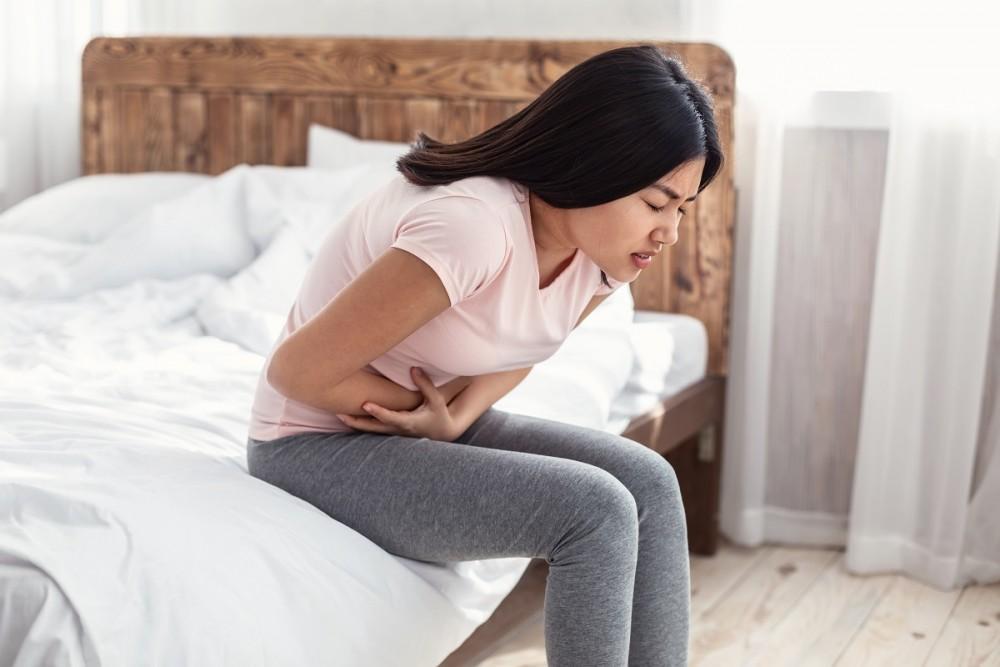Endometriosis is a complex gynecological condition that affects approximately 10-15% of women of reproductive age, yet it remains one of the most misunderstood and underdiagnosed conditions in women’s health.
This chronic inflammatory disorder occurs when tissue similar to the lining of the uterus (endometrium) grows outside the uterine cavity, typically in the pelvic region. Despite its prevalence, many women suffer in silence for years before receiving an accurate diagnosis, with studies showing an average delay of 4-11 years from symptom onset to proper diagnosis.
The impact of endometriosis extends far beyond physical discomfort. This condition can significantly affect a woman’s quality of life, relationships, career, and mental health. The pain associated with endometriosis is often described as debilitating, with many women reporting that it disrupts their daily activities and prevents them from participating in work, school, or social events. Understanding the symptoms, causes, and treatment options is crucial for early detection and effective management of this condition.
What makes endometriosis particularly challenging is its variable presentation. While some women experience severe, life-altering symptoms, others may have extensive endometriosis with minimal or no symptoms at all. This variability often leads to delayed diagnosis and inadequate treatment.
The condition can affect women from their first menstrual period through menopause, making awareness and education essential for women of all ages. By recognizing the signs and understanding available treatments, women can advocate for themselves and seek appropriate medical care to manage this chronic condition effectively.
What is Endometriosis?

Endometriosis is a chronic inflammatory condition where tissue similar to the endometrium grows outside the uterus and attaches to other parts of the body. This misplaced tissue responds to hormonal changes during the menstrual cycle, thickening and bleeding just like the normal uterine lining. However, unlike menstrual blood that can exit the body, this blood has nowhere to go, leading to inflammation, scar tissue formation, and adhesions that can cause organs to stick together.
The condition most commonly affects the pelvic organs, including the ovaries, fallopian tubes, and the lining of the pelvis. However, endometriosis can also occur in less common locations such as the bladder, bowel, and rarely, areas outside the pelvis, like the chest. Healthcare professionals classify endometriosis into several types based on location and severity, including superficial endometriosis on the pelvic peritoneum, cystic ovarian endometriosis (endometriomas), and deep endometriosis affecting structures like the rectovaginal septum.
Common Symptoms of Endometriosis
Pelvic Pain and Painful Periods
The most characteristic symptom of endometriosis is severe pelvic pain, particularly during menstruation. This pain, medically known as dysmenorrhea, is often described as “killer cramps” that can be intense enough to stop daily activities. Unlike normal menstrual cramps, endometriosis pain is typically much more severe and may worsen over time. Many women report that the pain begins before their period starts and continues for days into menstruation.
Pain During Intercourse
Pain during or after sexual intercourse (dyspareunia) is another common symptom affecting many women with endometriosis. This pain can significantly impact intimate relationships and quality of life, often causing emotional distress and relationship strain.
Gastrointestinal and Urinary Symptoms
Endometriosis can cause pain during bowel movements or urination, particularly during menstrual periods. Women may experience diarrhea, constipation, bloating, and nausea, especially around the time of menstruation. These symptoms are often mistaken for irritable bowel syndrome or other digestive issues, contributing to diagnostic delays.
Heavy Menstrual Bleeding
Excessive menstrual bleeding or bleeding between periods is frequently reported by women with endometriosis. Some women may need to change pads or tampons every 1-2 hours or experience bleeding through to their clothes.
Fertility Issues
Endometriosis is a leading cause of infertility, with studies showing that 31% of infertile women have the condition. For some women, difficulty getting pregnant is the first sign that leads to an endometriosis diagnosis.
Additional Symptoms
Other symptoms may include chronic fatigue, lower back pain that worsens during periods, migraines, irregular periods, depression, anxiety, and brain fog. The severity of symptoms doesn’t always correlate with the extent of the disease, meaning women with minimal endometriosis may experience severe pain, while others with extensive disease may have few symptoms.
Causes and Risk Factors

The exact cause of endometriosis remains unknown, but several theories attempt to explain its development. The most widely accepted theory is retrograde menstruation, where menstrual blood flows backward through the fallopian tubes into the pelvic cavity instead of exiting the body. This blood contains endometrial cells that may implant and grow outside the uterus.
Other potential causes include cellular metaplasia (transformation of cells outside the uterus into endometrial-like cells), embryonic cell changes influenced by hormones like estrogen, and transportation of endometrial cells through blood vessels or lymphatic systems. Immune system dysfunction may also play a role, as the body may fail to recognize and destroy misplaced endometrial tissue.
Several risk factors increase the likelihood of developing endometriosis, including family history (particularly first-degree relatives with the condition), never giving birth, early onset of menstruation, late menopause, and short menstrual cycles with heavy, prolonged periods.
Diagnosis of Endometriosis
Diagnosing endometriosis can be challenging due to its variable symptoms and similarity to other conditions. Healthcare providers typically begin with a detailed medical history and physical examination. While imaging studies like transvaginal ultrasound and MRI can help identify more advanced cases, particularly ovarian endometriomas, the definitive diagnosis requires laparoscopy.
Laparoscopy is a minimally invasive surgical procedure where a small camera is inserted through a tiny incision to visualize the pelvic organs directly. During this procedure, healthcare providers can identify endometriotic lesions and often remove tissue samples for biopsy confirmation. The surgeon may also remove or destroy suspicious endometriotic tissue during the same procedure, making laparoscopy both diagnostic and therapeutic.
Treatment Options for Endometriosis
Pain Management
Treatment for endometriosis focuses on managing symptoms and improving quality of life, as there is currently no cure for the condition. Pain management typically begins with over-the-counter nonsteroidal anti-inflammatory drugs (NSAIDs) like ibuprofen and naproxen, which can help reduce inflammation and pain.
Hormonal Therapies

Hormonal treatments are often the first-line approach for managing endometriosis symptoms. These medications work by suppressing ovarian function and reducing estrogen levels, which can slow the growth of endometrial tissue. Common hormonal options include:
-
Combined hormonal contraceptives: Birth control pills containing both estrogen and progestin are frequently prescribed as first-line treatment
-
Progestin-only medications: These include progestin-only pills, hormonal IUDs, and injectable forms like depot medroxyprogesterone acetate
-
GnRH agonists and antagonists: These medications create a temporary menopause-like state to reduce symptoms, though they may have significant side effects and usage limitations
Surgical Interventions
Surgery may be recommended when medications are ineffective or when endometriosis significantly impacts fertility. Surgical options include:
-
Laparoscopic surgery: Minimally invasive removal of endometriotic lesions, adhesions, and scar tissue
-
Laparotomy: Open abdominal surgery for severe cases
-
Hysterectomy: Removal of the uterus, sometimes with ovaries, is reserved for severe cases when childbearing is not desired
Fertility Treatments
For women with endometriosis-related infertility, treatment options include surgical removal of endometriotic tissue, ovarian stimulation with intrauterine insemination (IUI), and in vitro fertilization (IVF). Success rates vary depending on the extent of the disease and individual factors.
Living with Endometriosis
Managing endometriosis requires a comprehensive approach that may include medical treatment, lifestyle modifications, and emotional support. Many women benefit from joining support groups to connect with others who understand their experiences. Complementary therapies such as acupuncture, mindfulness, and physiotherapy may also help manage pain and improve quality of life.
Early diagnosis and treatment are crucial for slowing disease progression and reducing long-term complications. Women experiencing symptoms consistent with endometriosis should work closely with their healthcare providers to develop an individualized treatment plan that addresses their specific needs and goals.

